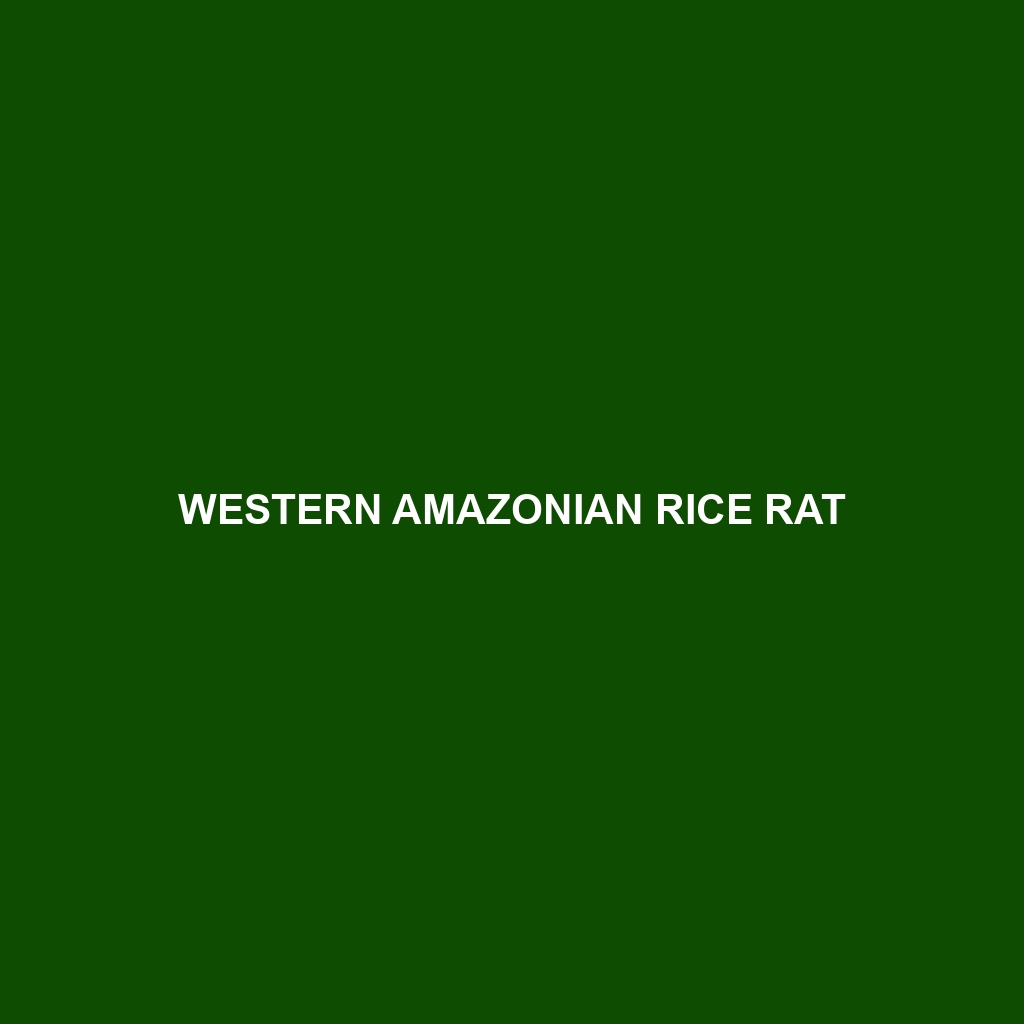Common Name: Western Amazonian Rice Rat
Scientific Name: Oligoryzomys microtis
Habitat:
The Western Amazonian Rice Rat is primarily found in the dense tropical rainforests of western Amazonia, particularly in countries such as Peru, Ecuador, and Brazil. This species thrives in lowland areas, often near freshwater bodies like rivers, streams, and wetlands where it can access ample vegetation.
Physical Characteristics:
Western Amazonian Rice Rats typically weigh between 60 to 150 grams and measure about 25 to 30 cm in length, including their long, scaly tails. Their fur exhibits a rich brown to gray coloration, providing excellent camouflage in their natural habitat. Notable features include large ears, long whiskers, and sharp claws, which facilitate climbing and foraging in the underbrush.
Behavior:
These rodents are primarily nocturnal, displaying active behaviors during the night. They are excellent climbers and often build nests in the foliage of trees or shrubs. Western Amazonian Rice Rats are known for their strong territorial instincts and may emit vocalizations to communicate with one another, particularly during the mating season when courtship behaviors are observed.
Diet:
The diet of the Western Amazonian Rice Rat primarily consists of seeds, fruits, and a variety of plant materials. They are also known to consume insects and other small invertebrates, showcasing their omnivorous feeding habits. This species plays a vital role in seed dispersal, contributing to the health and regeneration of their forest ecosystem.
Reproduction:
Reproduction among Western Amazonian Rice Rats occurs throughout the year, with peaks in the wet season. Females typically give birth to litters of 2 to 6 offspring after a gestation period of about 25 to 30 days. The young are weaned after several weeks and begin to explore their environment as they grow, learning vital survival skills from their mother.
Conservation Status:
As of now, the Western Amazonian Rice Rat is classified as Least Concern according to the IUCN Red List. However, habitat destruction due to logging and agriculture poses a potential threat to their populations in the wild, warranting monitoring of their conservation status in the future.
Interesting Facts:
One fascinating aspect of the Western Amazonian Rice Rat is its exceptional ability to adapt to various environmental conditions. They have been observed thriving even in fragmented habitats, showcasing resilience amid changing landscapes. Additionally, these rodents occupy a niche that aids in maintaining the biodiversity of their ecosystem.
Role in Ecosystem:
The Western Amazonian Rice Rat plays a crucial role in its ecosystem by acting as both a seed disperser and a prey species for larger predators. Their feeding habits contribute to the dispersal of plant seeds, promoting forest regeneration and diversity, while their availability as prey supports the food web within their habitat.
